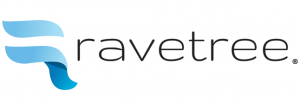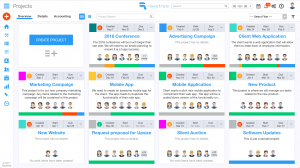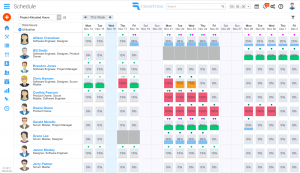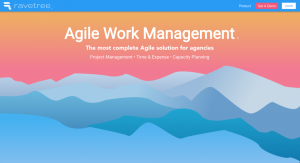When you're not a "startup" anymore...
All of "Hamilton" is great, of course, but, among the multitude of great lines, there's one in particular that always speaks to me as a business owner. During Cabinet Battle #1 (a rapped debate about America's fiscal strategy), Hamilton states to Jefferson, "Thomas, that was a real nice declaration. Welcome to the present; we're running a real nation."
Though the line is directly referring to conflict between the Federalists and Anti-Federalists, it always makes me think of the challenges startups face after they've achieved their first measure of success. You start with your own personal "Declaration of Independence" (from your previous job), start a company, and then just fight to survive. One day you wake up and it's a real business. The question then is, "Now what?"
Speaking from our own experience growing a fast-moving startup over the past five years, I wanted to offer our advice on what to do next when your startup grows up.
Scaling economically.
 Ironically, in a lot of ways, it's easy for a startup to be profitable. The staff is small and working like crazy, and no one expects a huge salary or a ton of perks, so you get a lot of bang for your buck out of the few people you have. You probably don't have an office yet (maybe just a co-working space), so there's not that huge monthly expense hanging over your head. The overhead in general is low, and you're really putting your A-game out there for every possible sale.
Ironically, in a lot of ways, it's easy for a startup to be profitable. The staff is small and working like crazy, and no one expects a huge salary or a ton of perks, so you get a lot of bang for your buck out of the few people you have. You probably don't have an office yet (maybe just a co-working space), so there's not that huge monthly expense hanging over your head. The overhead in general is low, and you're really putting your A-game out there for every possible sale.
Sure, it's not sustainable in the long-term (unless you are cool with regular nervous breakdowns), but in those early days you can often at least break-even, even if you're not rolling in the dough.
Eventually, you realize that your staff does need to grow, or that you do need a place everyone can work centrally. (Though you have to be careful not to add those costs just because they're things you want. See our prior article, Living a Lie: The mistakes that make entrepreneurs go broke.)
Scaling is not without its risks, but there are steps you can take to mitigate those risks. Having a budget is key, obviously, but it is also helpful to map out conditional budgets for if you add various expenses, such as rent (or if you were to have a slow sales month). You can use those to establish a set point for when you're willing to add to your overhead. (For example, once we are regularly at x recurring revenue, we will sign a lease on an office, or hire support staff.) This can allow you to scale at a safe pace, without over-expansion.
Managing changing stresses.
 When a startup is new, your main stressor is where the next sale is coming from. As the business grows and acquires clients in greater numbers, some of those stressors go away, and new stressors are added.
When a startup is new, your main stressor is where the next sale is coming from. As the business grows and acquires clients in greater numbers, some of those stressors go away, and new stressors are added.
One of the biggest headaches in a growing company stems from managing a growing staff. When the company is small, you're operating in your area of expertise. As the company grows, you have to learn more about being a leader. Hiring and managing employees can take a mental toll, especially as you realize that the systems that worked when the company was smaller are no longer sufficient. (For instance, you will likely need to invest in a CRM that can help your new staff navigate their workload. Even if the original startup members don't need it, new employees will.)
Additionally, as you get more and larger clients, the clients themselves will require additional management. It can be hard to deliver the same level of personal attention when your time is spread so thin between them. It will become necessary to delegate some of the customer service duties to other staff (terrifying as that may be).
This is not to say you drop contact with clients, or aren't available when they need something; it just means you unload some of those duties onto other people, so the client can get what they need (even if they're no longer getting it directly from you).
Becoming who you are supposed to be.
 It's not uncommon to feel a bit "lost" as your company grows. I experienced a small existential crisis the first time we signed and began work with a new client with whom I myself had never directly communicated. Once I got over the brief panic that I might no longer be needed, I realized how freeing it was, that I knew we could bring in revenue without my involvement. As we grew and hired additional staff, I didn't have to work on every single account; a new admin meant that I didn't have to manage the filing and calendar anymore.
It's not uncommon to feel a bit "lost" as your company grows. I experienced a small existential crisis the first time we signed and began work with a new client with whom I myself had never directly communicated. Once I got over the brief panic that I might no longer be needed, I realized how freeing it was, that I knew we could bring in revenue without my involvement. As we grew and hired additional staff, I didn't have to work on every single account; a new admin meant that I didn't have to manage the filing and calendar anymore.
I began to have something almost resembling "free time", and for me, that was terrifying. I had to figure out what to do with myself.
Fortunately, I really enjoy the study of business, in general. I began focusing on how we could improve processes, expand into new markets, and stay ahead of changing trends. I worked for us to become one of the first Xero-certified partners in our area, and began focusing on new business types (B-Corps, for example), so we could be prepared to serve upcoming businesses.
I also started focusing on who I wanted to be as a business leader, and who we wanted to be as a company. In a lot of ways, the company's growth has freed us to circle back to those original goals and mission statement. It's not enough just to grow a successful business; we want to stay in line with why the company was founded in the first place.
It's easy to imagine what you think a business owner should look like (see our article What makes an owner? for some prime examples) and fall into the trap of backing too far off from the company, or becoming an absentee owner. This is not what embracing your changing role means. It means that, instead of ordering business cards, you're calling referral partners (not that you're relaxing on a yacht while the minions do all the work).
It seems ironic that success should bring so many difficulties, but adapting to those new challenges is what sets companies apart. Be flexible, stay committed, and plan for everything you can, and you'll keep the fire you started growing strong.
Feature Spotlight: Davidson Wicker, CEO of Ravetree
As those of you who have known us over the last few years are aware, The Bookkeeper grew quickly. When new employees were brought on board, it became obvious that our old, piecemeal system of digital file storage in one location, a time tracking app in another, and endless emails detailing project updates, would not be sufficient as we scaled.
We were fortunate to come across Ravetree in its early days, and to have the opportunity to adopt it to our business. It has been a true "game-changer" for us, and has really allowed us to stay on top of all of our client and operational needs, even during rapid expansion.
I got to ask Ravetree CEO Davidson Wicker a few questions about himself, his company, and their product.

Courtney: I saw that your educational background is in Applied Physics. How did you transition that into a career in software development?
Davidson: I taught physics for a couple of years as I was building up my coding skills. We did some scientific programming in grad school, so that's where I started to get a taste of how fun programming could be.



